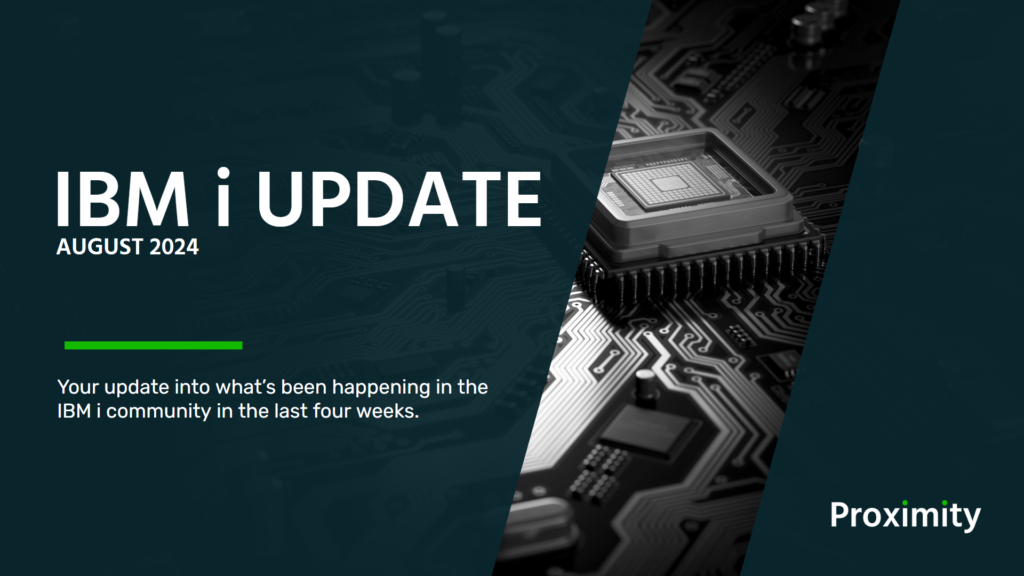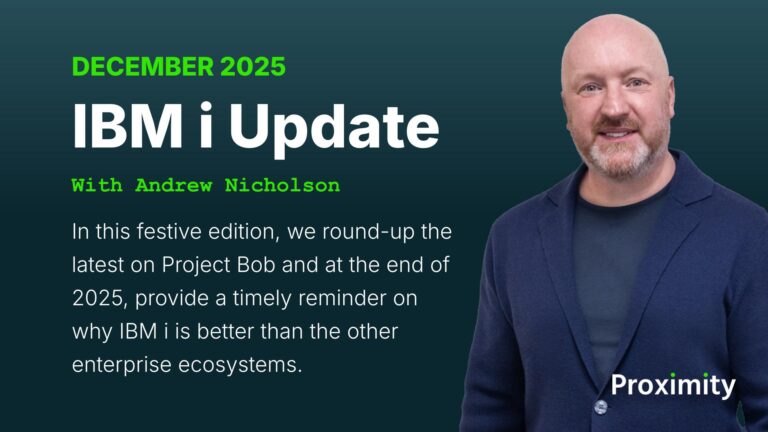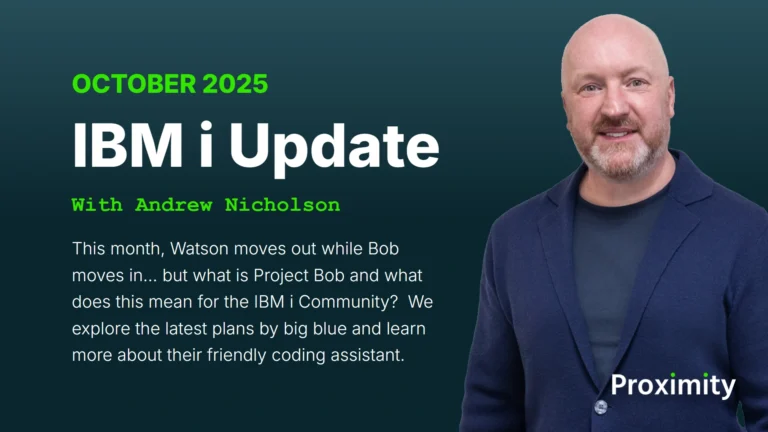Welcome to your IBM i update for August 2024.
This month, Outsourcing company DDC ask the question, ‘is it worth continuing to invest in IBM i’, could Cloudstrike happen on IBM i? And, the latest PTF guide.
You can watch the video below or read the full article underneath.
Watch the Video:
Is it worth continuing to invest in IBM i
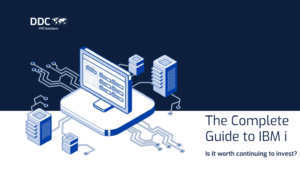
Towards the end of August, the American Business Processing Outsource company DDC asked the question, is it worth continuing to invest in IBM i?
Their whitepaper started by asking if our beloved platform is outdated or underrated?
They explained that while IBM i ‘maintains a stellar reputation for scalability, security, and cost effectiveness’, ‘in an era where new technology platforms and programming languages are constantly introduced, why stick with a legacy system like IBM i?
After all, maintaining legacy systems and integrating them with more modern platforms can be challenging.’ and so ultimately, ‘is it worth the investment?’
So, DDC understood that the discussion of often revolves around (in what I would describe as the false narrative) that IBM i is a legacy system and newer systems dismiss it as outdated.
Key advantages of the IBM i
To counter these claims, DDC identify as key advantages of the platform.
The first being its Reliability and Stability. DDC recognised that downtime come with significant costs but with its inherent stability due to the integrated environment, built-in database and high fault tolerance, IBM i offers far more reliability and uptime than many newer, ‘trendier’ systems.

Next, Scalability, and IBM i’s single level storage architecture providing a straightforward and rapid approach to scalability explaining that, ‘Businesses operating on IBM i are less likely to experience downtime, bottlenecks, or disruption during periods of increased demand.’
DDC also highlighted the IBM i’s prowess when it comes to integration, being able to coexist and link to an assortment of applications both on and off the box. And while IBM i is seen as a legacy system. It’s support for such technology is about as absolute as it gets. In the whitepaper, DDC site the IBM i’s high level of interoperability, allowing organisations to adopt new technologies and explore new functionalities while preserving the underlying codebase that’s been the successful backbone of your business for years.
Next was the platforms ability to facilitate multiple cloud services – remote hosting, disaster recovery, hybrid and, of course, it’s seamless integration with other services make it a great cloud bedfellow.
And of course, finally, DDC recognised the platforms reputation as one of the most secure platforms available making it invaluable for industries handling sensitive customer data and financial information.
Common challenges on the IBM i
So, all good and well then? No need to consider alternatives? Well, not quite. DDC identified some common challenges…
The first being in a skills gap – in which is significant. On the whole, we rely on older programming languages like RPG and CL that are rarely taught in college and university programs today. The whitepaper explains that, ‘As the education system focuses on newer programming languages, many experts in RPG are entering retirement, compounding the skills gap issue. This makes it difficult — and costly — for organizations to find and hire suitable candidates to maintain and develop applications on the IBM i platform.’
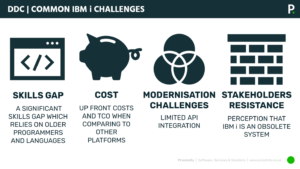
Next was cost. Now, I’ve previously provided details on why IBM i provides some of the lowest total cost of ownership in the industry but imagine if ONLY your central enterprise system is running on the platform when everything else is running on wintel, then some may say that the cost become prohibitive… now, I’d say that there would be a opportunity to move more things onto the Power platform, for all the reasons I spoke about before, security and resilience… but I’ll leave that for another day.
Modernisation challenges was next and in this, DDC were addressing APIs and IBMs cautious approach to introducing new protocols into the OS due to security concerns.
But the big one for me, and I’m glad DDC identified it too is cultural – stakeholder resistance. DDC explained that, ‘For many, the user experience offered by IBM i feels outdated, especially compared to modern, visually appealing web and mobile interfaces. Recent graduates entering the workforce may never have encountered IBM i systems during their education, leading them to view the platform as outdated or irrelevant. Those unfamiliar with the system’s benefits may assume it’s obsolete based on appearance alone.’
Overcoming the challenges on the IBM i
Thankfully, DDC provided practical advice to help overcome these challenges. For example, for the skills gap, DDC have sensible suggestions such as training and mentorship programs for fresh college graduates who perhaps know PHP and Python best.
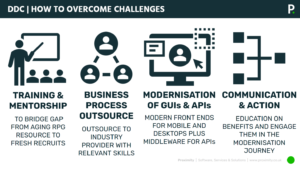
Another sound idea was to partner with a specialist business process outsourcing firm with a team of relevant and skilled IBM i professionals on deck to satisfy your support and development requirement.
Speaking of which, developments in modernisation in interfaces, both mobile and web will vastly improve the user experience reducing stakeholder resistance while additional developments or middleware should be adopted to resolve the API issue.
With this in place, you have the tools, technology and support to educate the business that IBM i is a rock solid platform that not only help the business grow to where they are today, but also will support them in the future too.
The white paper is available on the DDC website.
CrowdStrike outage: Could it happen on the IBM i?
Now, you may remember that in July the CrowdStrike outage impacted tens of thousands of banks, hospitals, governments and schools… but most noticeably, airlines with more than 5,000 flights being cancelled around the world as businesses struggled to restart their systems.
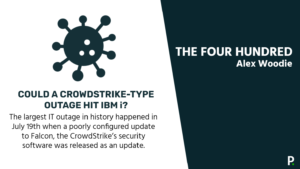
Businesses around the world panicked as their newly updated machines failed to restart, showing only the ‘blue screen of death’. The problem was not a cyberattack as originally suspected by the mainstream media but in fact with the poorly tested update to the security software which caused failure.
So, four weeks later, in an article on the four hundred, Alex Woodie asked, could a crowdstrike-type outage hit IBM i?
The answer, worryingly is, Yes.
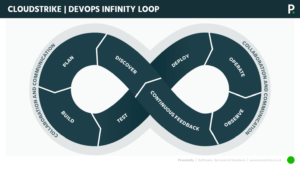
Now, as discussed previously, the IBM i is inherently robust and is built as an environment in which safety is first. With the right software and set-up, you can have multiple environments with planned deployments and rollbacks plus additional high availability and disaster recovery instances too. But the route cause of the Cloudstrike was in poor coding, testing and deployment practices…
So, the post-mortem discovered several problems with CrowdStrike’s coding and testing processes with a mismatch of fields, with the maximum expected field values of 20 being exceed by 1 to 21, thus creating an ‘out-of-bounds’ memory read resulting in a system crash. If developed in the parameters, there wouldn’t have been a problem.
If tested properly, the error would have been picked up. But, as Alex rightly pointed out, to compound the issue, CrowdStrike did not conduct a staggered release. Instead, they pushed the update out to all clients simultaneously, causing the blue screen of death on nearly 10 million computers worldwide.
So it would seem that Croudstike, simply didn’t follow the basic principles of devops seen here in an infinity loop. Now, four weeks on CrowdStrike have said that lessons have been learnt and have pledged to fix the DevOps defects that led to the outage. These including better test procedures, more automated testing, deployment layers and acceptance checks.
With deployment control being more under individual customer management to aid with staged rollout.
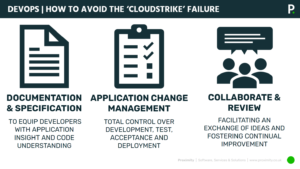
How to avoid a CrowdStrike type outage on the IBM i
So what can we in IBM i do to make sure something similar doesn’t happen in our own environment. Well, other than follow the Dustin Whittle infinity loop, we should first look at documentation.
Ideally, this should be fully documented so you can derisk your codebase, understand your application and the impact of any changes made to it. If not documented already, there are IBM i specific solutions out there that supports this alongside graphical data modelling and the like.
But, simply put, to build online documentation and schematics of your applications ensures code continuity while promoting quality.
Next, and at the very least, a robust procedure with milestones and signoffs for DevOps to ensure tight and measured control over development, test, UATs and deployment. Again, there are some wonderful solutions in the marketplace that can support these activities including additional features such as automation and rollback.
And finally, in the words of Vanilla Ice, stop, collaborate and listen. Gain feedback at each milestone. Understand what went wrong and put in conditions that stop that from happening again, and what went right, and put energy into refining this… then rinse and repeat.
So, could a ‘cloudstrike’ instance happen within an IBM i enterprise? Yes, absolutely. But should it happen? Not on your nelly!

The latest PTF guide
And finally, IBM released a raft of PTFs before the summer holidays. And the big news here is that… there’s nothing big.
And this was a good thing for IT Admin staff nervously looking at applying PTFs before jetting off on their summer holidays.
The biggest enhancements seems to be within ACS with IBM listening to users and adding improvements in the GUI and enhancing data transfer too.
If you’re a SAP user, then you really should be applying 7.5 which adds further protection against vulnerabilities and in websphere, there are some important fixes in the Java management builder a fix for some deployment issues and apache enhancements too – not too much to write home about.
That’s it for this months update.
Should you wish to view any of the articles featured in full, please check out our IBM i blog here.
Until next time,
Andy
Catch our previous July IBM i Update. Alternatively, if you’d like to receive the latest IBM i Update hot off the press to your inbox, subscribe to the newsletter version on LinkedIn.

